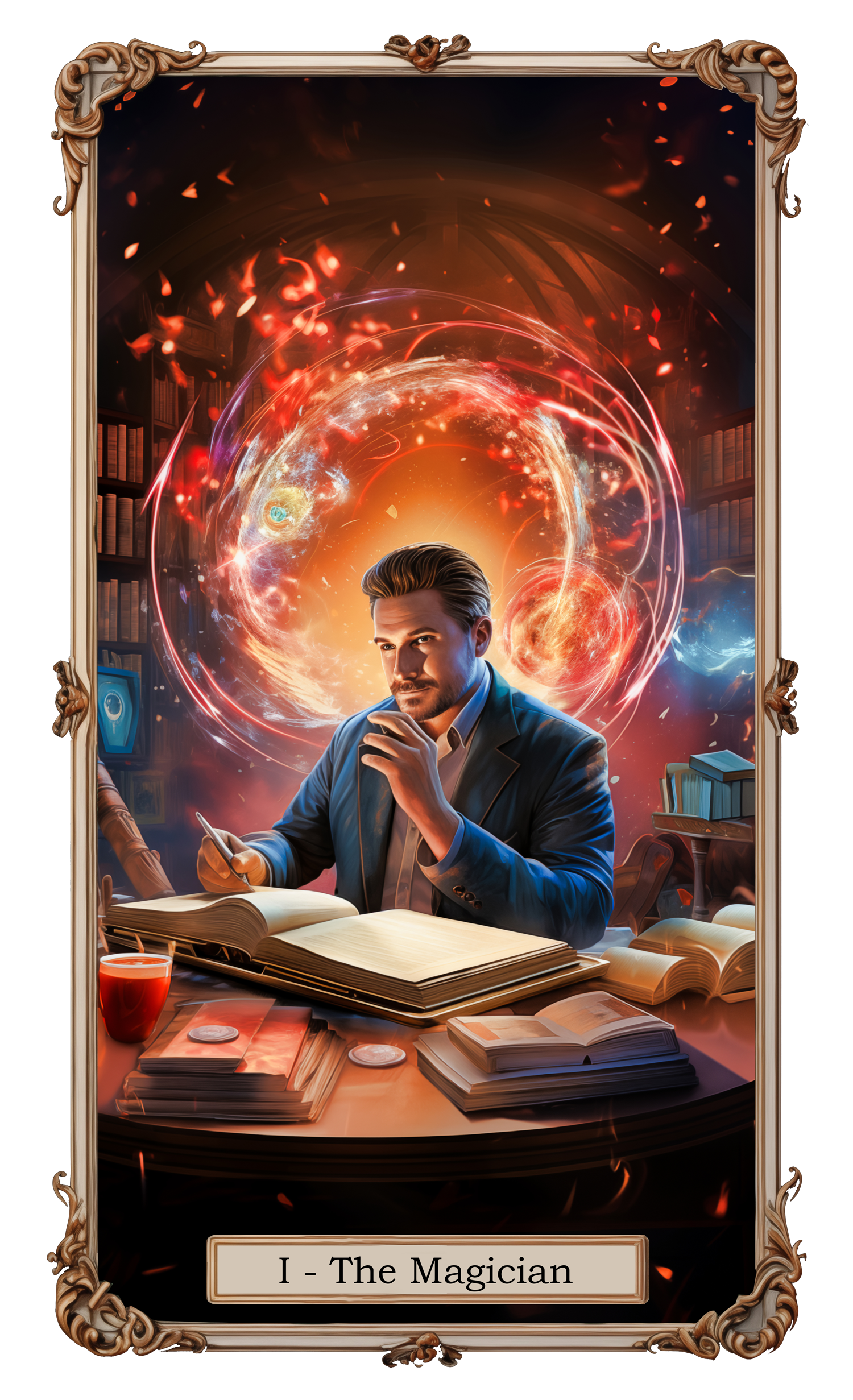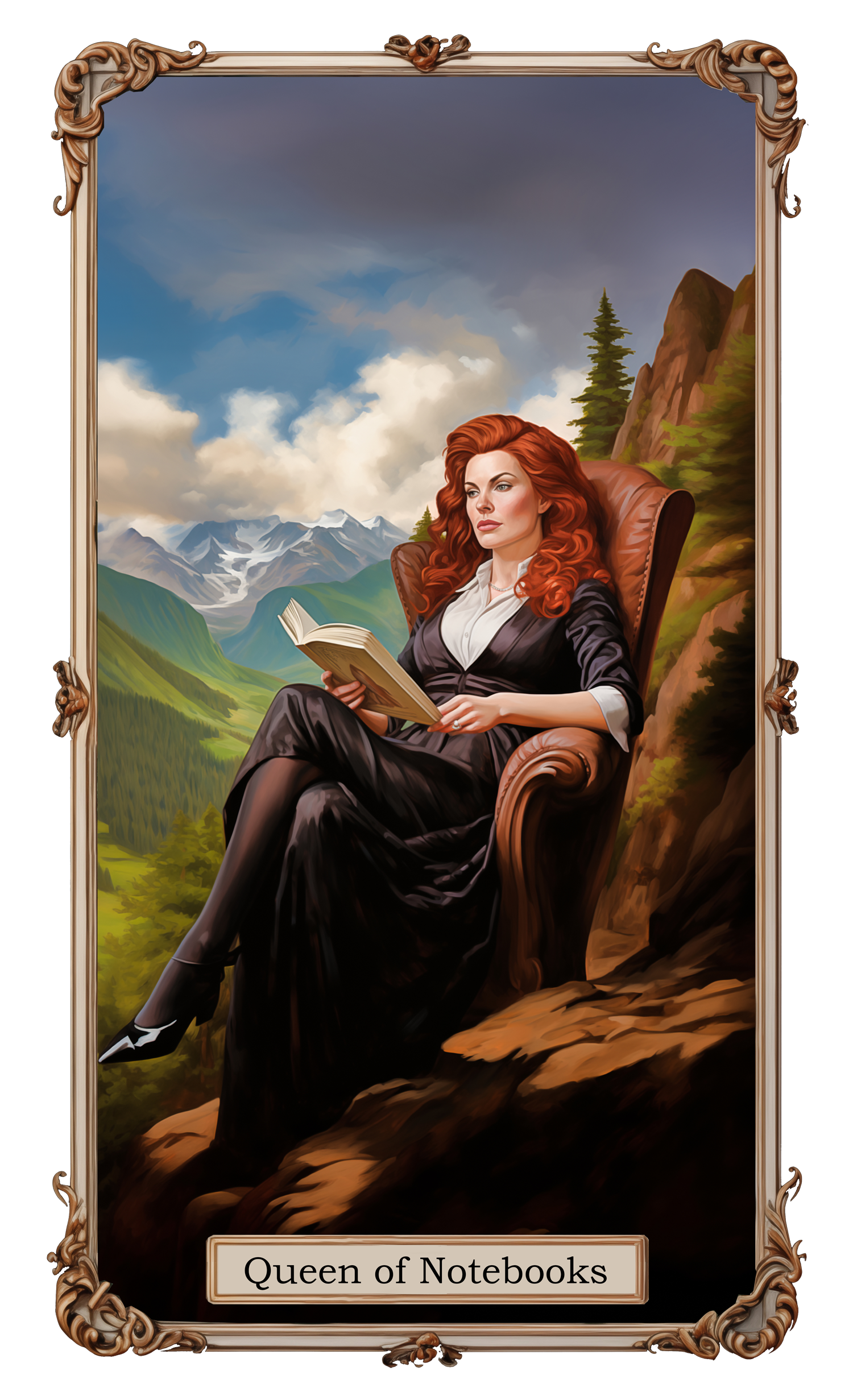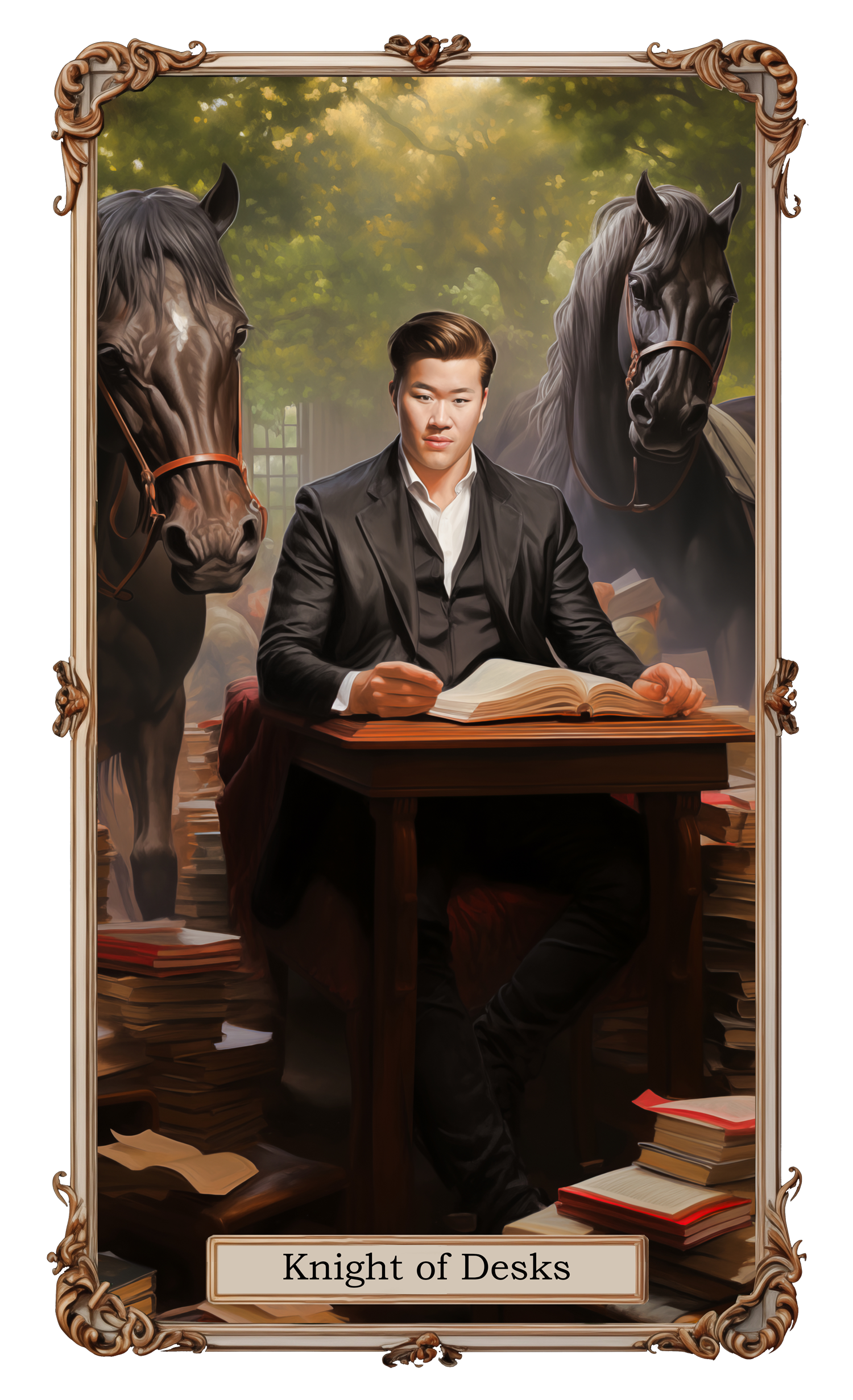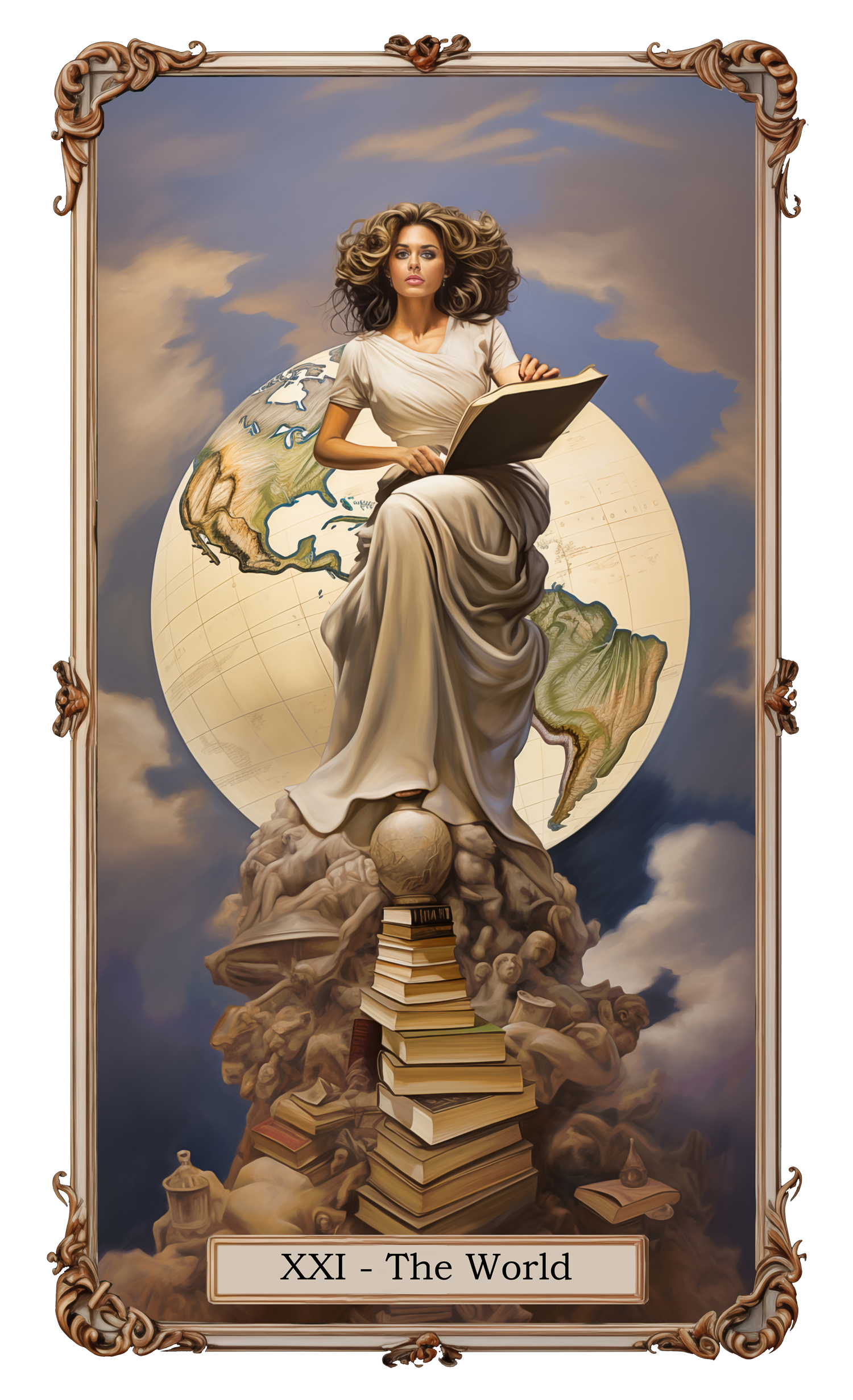
(Article images from my Tarot deck, The Modern Wordsmith Tarot, available in my Etsy shop.)
Recently, while the Kickstarter for my novel, Anna, Daughter of Creed, was still running (April 30 to May 30, 2024), I shared it across many Facebook groups. In one group, someone commented that if my book was any good, it would be picked up by a traditional publisher and not self-published. I tend to ignore these sorts of foolish comments.
However, two other people came to my defense! One person said, “Or, the marketers in traditional publishing don’t know something good when they see it,” and another added, “Lots of great authors choose to publish independently for many good reasons.” This incident underscores a critical discussion in the writing community: the choice between self-publishing and traditional publishing.
Why I Chose the Indie Route
 I chose the indie (self-publishing) route for several reasons. While I had a professional agent for my book Tamshi’s Imp, it wasn’t sold because most publishers thought it was too short. (It’s 67,000 words, while most fantasy novels by first time authors are around 80,000.) Despite this, my agent and his first reader loved the manuscript. I’ve had short stories published in semi-pro publications and one in Marion Zimmer Bradley’s Fantasy Magazine, a pro publication back in the 90s. If I had kept pursuing traditional publishing, I probably would have succeeded that way.
I chose the indie (self-publishing) route for several reasons. While I had a professional agent for my book Tamshi’s Imp, it wasn’t sold because most publishers thought it was too short. (It’s 67,000 words, while most fantasy novels by first time authors are around 80,000.) Despite this, my agent and his first reader loved the manuscript. I’ve had short stories published in semi-pro publications and one in Marion Zimmer Bradley’s Fantasy Magazine, a pro publication back in the 90s. If I had kept pursuing traditional publishing, I probably would have succeeded that way.
As indie publishing became a more viable option in the early 2000s, I decided to explore it. Indie publishing offers me more control over my fiction, formatting, book covers, and more. Plus, most traditionally published writers still have to do their own marketing, so I figured, why not publish myself and keep more royalties? With indie publishing, my books won’t go out of print unless I decide to take them out of print.
The Biggest Advantages of Self-Publishing
The most significant advantage of self-publishing is the control it gives me. I have complete say over what stays in my books, their presentation, and the marketing strategies I employ. This creative control is invaluable to me as an author who cares deeply about every aspect of my work.
Challenges in Self-Publishing

Self-publishing isn’t without its challenges. Marketing, in particular, can be daunting. Even traditionally published authors face this issue, but as an indie author, it’s entirely my responsibility. Additionally, designing book covers that look professional and appealing has been a learning curve. However, through research and practice, I’ve managed to hone this skill.
Experience with Traditional Publishing
I had a short story, L’Autre Margot, published in Marion Zimmer Bradley’s Fantasy Magazine. This was a fantastic experience, especially since Vincent Di Fate did the artwork for little fantasy tale. I’ve also had two flash fiction pieces published in the yearly Queer Sci Fi anthology. So, I’m no stranger to the world of traditional publishing.
Advantages of Traditional Publishing
Traditional publishing has its perks, especially for those authors who are strongly backed by their publishers. These advantages include extensive marketing campaigns, book signings, and potentially lucrative advances. However, it’s important to note that not all traditionally published authors receive this level of support. In fact, most don’t.
Disadvantages of Traditional Publishing
One significant disadvantage of traditional publishing is the short window authors often have to prove their book’s success. If a book doesn’t perform well quickly, it might be challenging for the author to secure another traditional publishing deal. Bookstores may not want to carry their subsequent novels. This pressure can be quite stressful and limiting.
Creative Control in Self-Publishing

Self-publishing has dramatically impacted my creative control over my work. Indie publishers need to ensure their books are as good as, if not better than, traditionally published ones. I’ve been writing for a long time, studying the craft, taking courses, reading extensively, and writing millions of words. I hire a professional editor for each book and usually have a few first readers provide feedback before finalizing the drafts. This process ensures that my books are polished and professional.
The Role of Marketing in Self-Publishing
Marketing plays a crucial role in my self-publishing strategy. I write a weekly blog post to generate interest, send out a weekly newsletter, and swap book mentions with other authors to grow my subscriber base. I also run a Kickstarter for each novel when I’m close to finishing the first draft to help offset editing expenses. Additionally, I share information about my books, blog, and writing on Facebook, Threads, and Substack.
Successes and Milestones
Through self-publishing, I’ve achieved several milestones. I now have five published novels. Two are fantasy novels from around the year 2000, and the other three comprise my trilogy, The Adventures of Bodacious Creed, which marked my shift from fantasy to sci-fi westerns. Finishing that trilogy was a significant milestone for me.
Advice for Aspiring Authors

For authors considering self-publishing versus traditional publishing, my advice is to explore both options. You don’t have to stick with one path. There are traditional authors, indie authors, and hybrid authors. If you decide to self-publish, hiring an editor is crucial, no matter how well you think you can edit your own work. The investment in professional editing will significantly enhance the quality of your book.
Choosing between self-publishing and traditional publishing is a personal decision that depends on your goals, resources, and preferences. Both paths have their pros and cons. For me, the control and creative freedom of self-publishing outweigh the challenges. It’s a journey that requires dedication, but the rewards are deeply fulfilling.
“Be confident in your work, but be careful not to put a book out into the world until you are sure that it is your very best work and professional in all respects (writing, editing, cover design, formatting, etc.). As with anything, you get only one chance to make a first impression, and every reader deserves a quality product.” ~ Darcie Chan